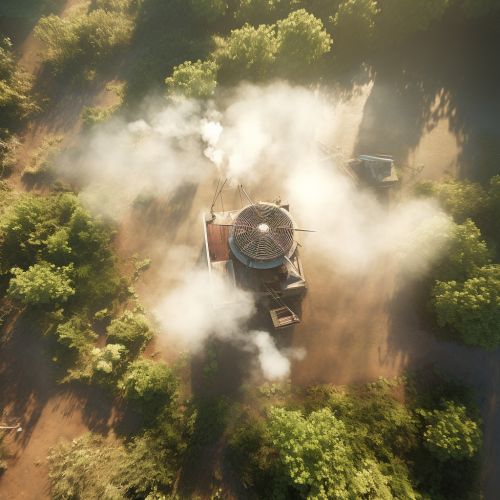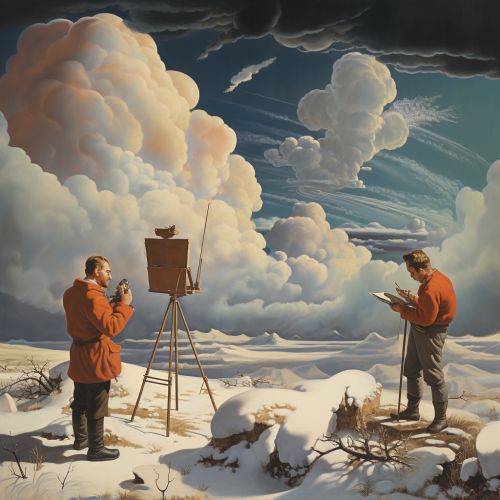Occluded front
Introduction
An occluded front, also known as an occlusion, is a complex weather front formed during the process of cyclogenesis. It occurs when a cold front overtakes a warm front, leading to the warm air being lifted off the ground surface. This process is a significant part of the life cycle of extratropical cyclones and can result in significant changes in weather conditions.
Formation
The formation of an occluded front is a dynamic process that involves the interaction of cold, warm, and cooler air masses. The process begins when a cold air mass moves faster than a warm air mass and catches up with it. As the cold front overtakes the warm front, the warm air mass is forced upwards into the atmosphere, creating a 'pincer' effect. This results in the formation of an occluded front, which is typically represented on weather maps by a purple line with alternating semi-circles and triangles.


Types of Occluded Fronts
There are two main types of occluded fronts: cold occlusions and warm occlusions.
Cold Occlusion
A cold occlusion occurs when the air behind the cold front is cooler than the air ahead of the warm front. In this case, the cooler air replaces the warmer air at the surface. Cold occlusions are more common in higher latitudes and during the winter months.
Warm Occlusion
A warm occlusion occurs when the air behind the cold front is warmer than the air ahead of the warm front. In this case, the warmer air replaces the cooler air at the surface. Warm occlusions are more common in lower latitudes and during the summer months.


Weather Associated with Occluded Fronts
The weather associated with occluded fronts can vary greatly depending on the specific conditions of the air masses involved. However, some general patterns can be observed.
Precipitation
As the warm air mass is forced upwards by the cold and cooler air masses, it cools and condenses, often leading to precipitation. This can take the form of rain, snow, or other forms of precipitation, depending on the temperature of the air masses and the altitude.
Wind
Changes in wind direction and speed are also common as the front passes. The wind usually shifts direction as the front approaches and can increase in speed.
Temperature
A drop in temperature is typically observed after the passage of the occluded front, as the warmer air mass is replaced by the cooler air mass.


Impact on Weather Forecasting
Occluded fronts play a crucial role in weather forecasting. Their formation and movement can indicate the development and progression of extratropical cyclones. Forecasters monitor these fronts to predict changes in weather conditions, including shifts in wind direction, drops in temperature, and potential precipitation. Understanding the dynamics of occluded fronts is therefore essential for accurate weather prediction.


